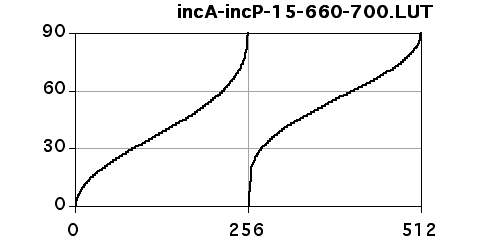Calibration files |
||
|
|
The camera calibration files (.CAL)This is a text file with three parts:
The so-called Flare correction has to be determined if rotating polarizers are used; it depends on the degree of pre-polarization that occurs at the reflecting mirror. The Software convention has a slope of -1 if the software used to prepare the input uses density coding for the grey values, i.e., if it considers 0 = white and 255 = black (as in Image SXM). The slope has to be +1 for brightness coding (as in Photoshop) Most camera calibrations look approximately the same because the CCDs are usually perfectly linear.
Download folder with all calibration files → calib.tar.gz |
|
|
Inclination calibration (.LUT)Two files are offered for sections that are 20 µms thick:
Both correct the inclination from amplitude and circular polarization and both are valid for interference filters between 660 and 700 nm. The second file is a hybrid between the true calibration and a linear one;
in practical applications this has been found to provide a better calibration.
|
|
|
Inclination calibration (.LUT)Two files are offered for sections that are 15 µms thick (very thin sections):
Both correct the inclination from amplitude and circular polarization and both are valid for interference filters between 660 and 700 nm. The second file is a hybrid between the true calibration and a linear one;
in practical applications this has been found to provide a better calibration.
|




